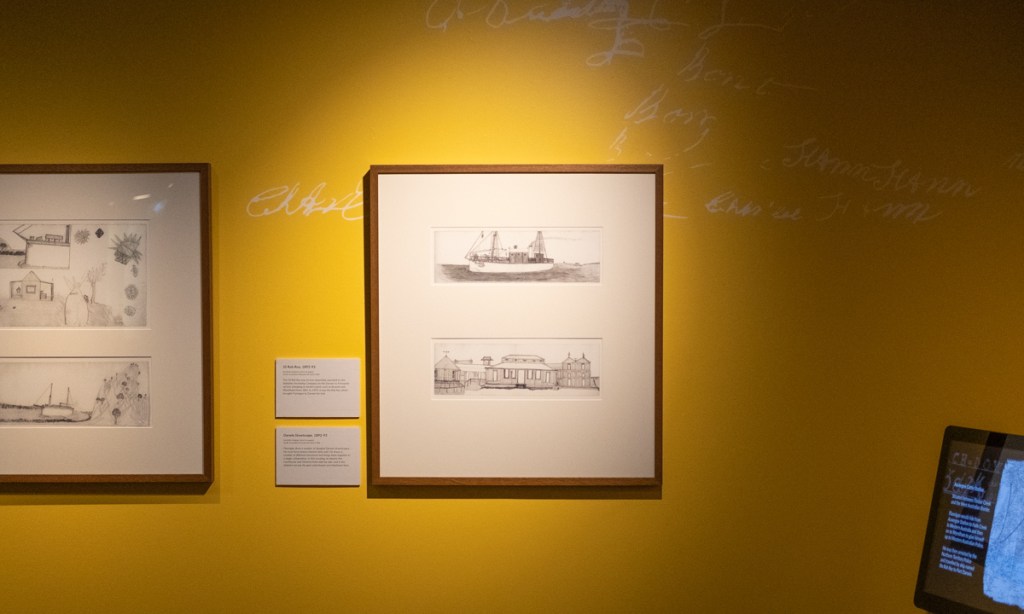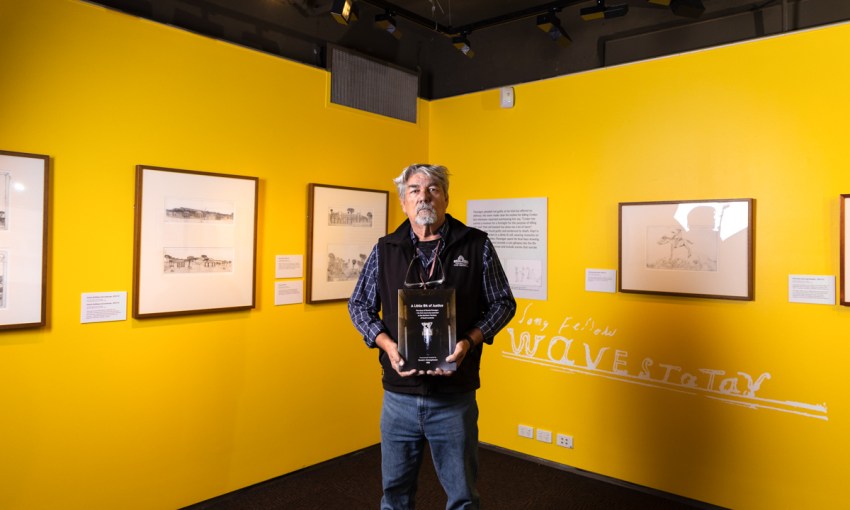The South Australian Museum is exhibiting a series of prison illustrations by 19th century artist Charlie Flannigan, a First Nations man and the first person to be hanged in the Northern Territory, in 1893.
Remembering Charlie Flannigan
Charlie Flannigan was a stockman, jockey, draftsman and, above all else, a proud First Nations Australian man, says Darwin researcher, curator and author, Donald Nawurlany Christophersen.
According to Don, Charlie’s skills were widely recognised in his day.
A Little Bit of Justice: The Drawings of Charlie Flannigan
5 May—10 September
South Australian Museum
North Terrace, Adelaide 5000
Connect:
Instagram
“They described… Charlie Flannigan as a fair stockman and expert in the drafting and branding out,” Don says.
“So he was quite skilled around cattle and horses… He was also a very confident jockey.”
However, Charlie’s life was cut short following an altercation he had with his station manager, Sam Croker.
Sam had openly killed another First Nations man, and in response, Charlie shot Sam dead.
The stockman handed himself in to the police shortly after, because “remorse and guilt got the better of him,” Don says.
“He took responsibility for his actions,” Don continues. “Some people don’t do even today, but he certainly did.
“He could’ve run anywhere – you know, the years 1892 in the middle of nowhere – but nah, he went and handed himself in, because he [felt] guilt and remorseful for what he’d done, and he thought he should pay for it.”

‘A Little Bit of Justice’ at the South Australian Museum
Charlie was sentenced to death. He spent 10 months in Fannie Bay Gaol, before becoming the first man in the Northern Territory to be hanged.
Don describes this outcome an act of “revenge”, or an “eye for an eye”.
He references another case, this time of a white Australian man, named George Page, who was also given the death penalty, for murdering his niece.
George eventually had his sentence lessened to life in prison with hard labour.
“They were going to execute 11 men, one in South Australia who was non-Indigenous and… 10 were Indigenous from the Northern Territory,” Don says.
“They ended up only executing two [who were both First Nations Australians], and why they got to two, they wanted to set an example, and Flannigan was the perfect candidate for that, because he offered no defence.
“They wanted to hang someone in the Territory, right or wrong, and he was going to be the first.”

Some of Charlie’s original drawings
When in prison, Charlie turned to drawing as “prison art was all the rage”, says Don. He drew things that had great significance to him, such as horses, houses and buildings he remembered.
These illustrations have been kept by the South Australian Museum (SAM).
In honour of reconciliation week, SAM is displaying these 130-year-old drawings in an exhibition titled A Little Bit of Justice: The Drawings of Charlie Flannigan.
There are more than 80 illustrations on display, all of which give insight into life spent in confinement at this time in Australian history.
Don’s favourite piece is one Charlie drew of the courthouse in Darwin, being the place where the artist’s fate was decided.
“I couldn’t work out what the buildings were, and then I realised what he was drawing… a courthouse and the telegraph station in Darwin,” Don says.
“Once I realised that, I started to work out all the images he was trying to convey, and it was everything around town.”

The Darwin courthouse, drawn by Charlie Flannigan (bottom)
Don has created a book from Charlie’s works, also titled A Little Bit of Justice. He sees it as his mission to give context to these drawings, and to Charlie’s life.
“South Australia had the images but they didn’t have the story, and to combine the two tells you the true story of Charlie Flannigan,” Don says.
“Because without the text or the story that goes with all the drawings, they mean nothing, until you understand what he’s trying to convey to us.
“There’s some ugly words in there, but you know, we’re supposed to be telling the truth about our history.”
The exhibition is intended as a tribute to Charlie’s bravery and the unjust society First Nations people lived within at that time.
Charlie also hopes it will prompt the public to consider the ways contemporary society is still unjust for Aboriginal and Torres Strait Islander people.
“These two men that had their lives unfairly ended, [they] were First Nations Australians,” Don says. “People said, ‘This isn’t right, what’s happening to First Nations peoples — we need to make things better’.”
“Here we are in 2023 and we’re still working on building relationships between Black and white Australians.”
While A Little Bit of Justice has launched during Reconciliation Week, the sharing of First Nations stories, and listening by broader Australian society, must go on beyond federally recognised moments of reflection.
“Reconciliation for me, it means that we need to tell stories about our past, our history, and sometimes it’s ugly, but sometimes it’s of a nature where people [say] the right things,” Don says.
A Little Bit of Justice: The Drawings of Charlie Flannigan will run from 5 May until 10 September at the South Australian Museum, located at North Terrace.
Don will hold a free public talk exploring the creation of A Little Bit of Justice on Friday, 2 June, at 10:30am at the South Australian Museum.
The book is available for purchase at the museum gift shop.

‘A Little Bit of Justice’ by Donald Nawurlany Christophersen




